Презентація на тему «Scotland» (варіант 1)
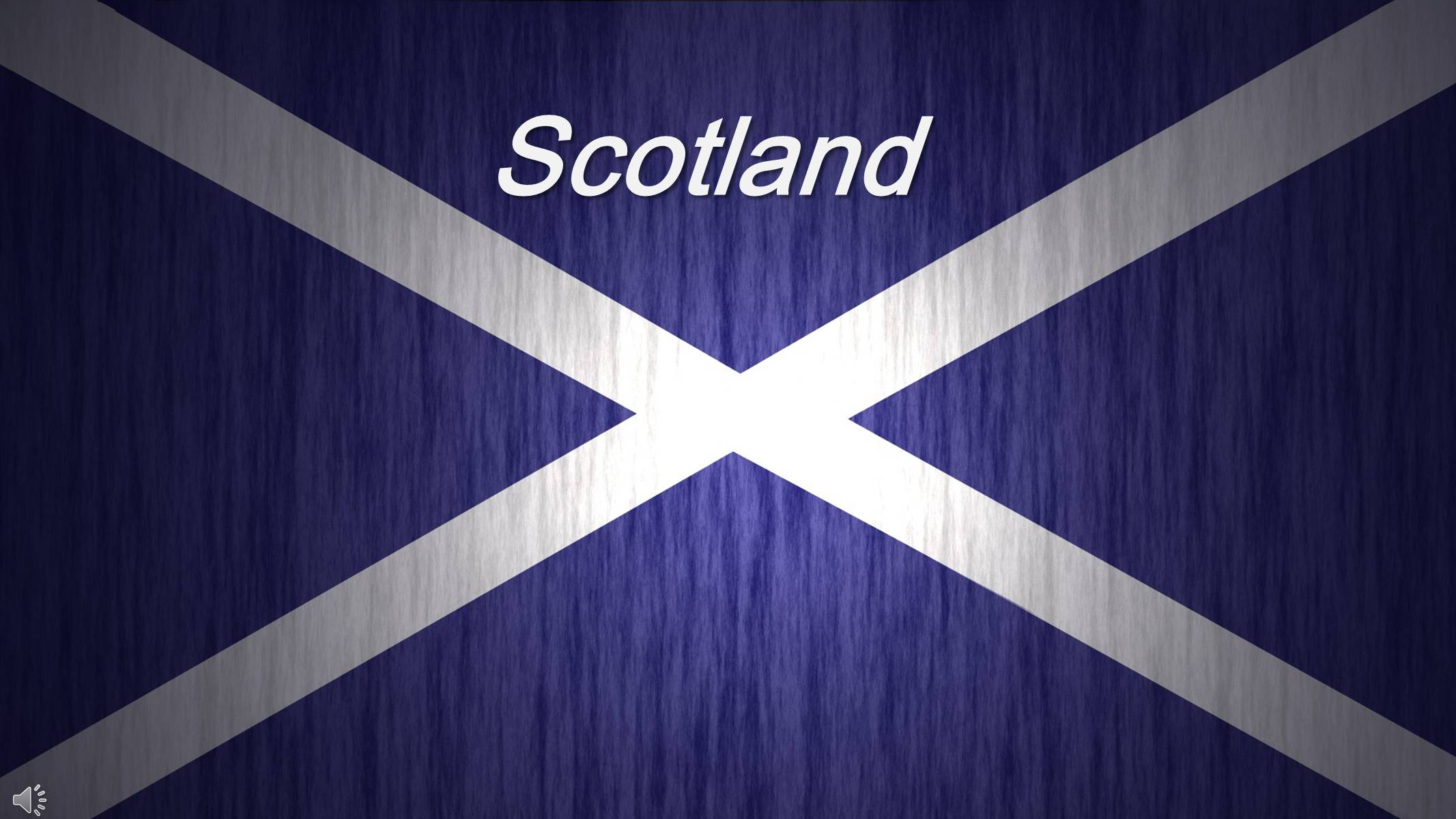
Scotland
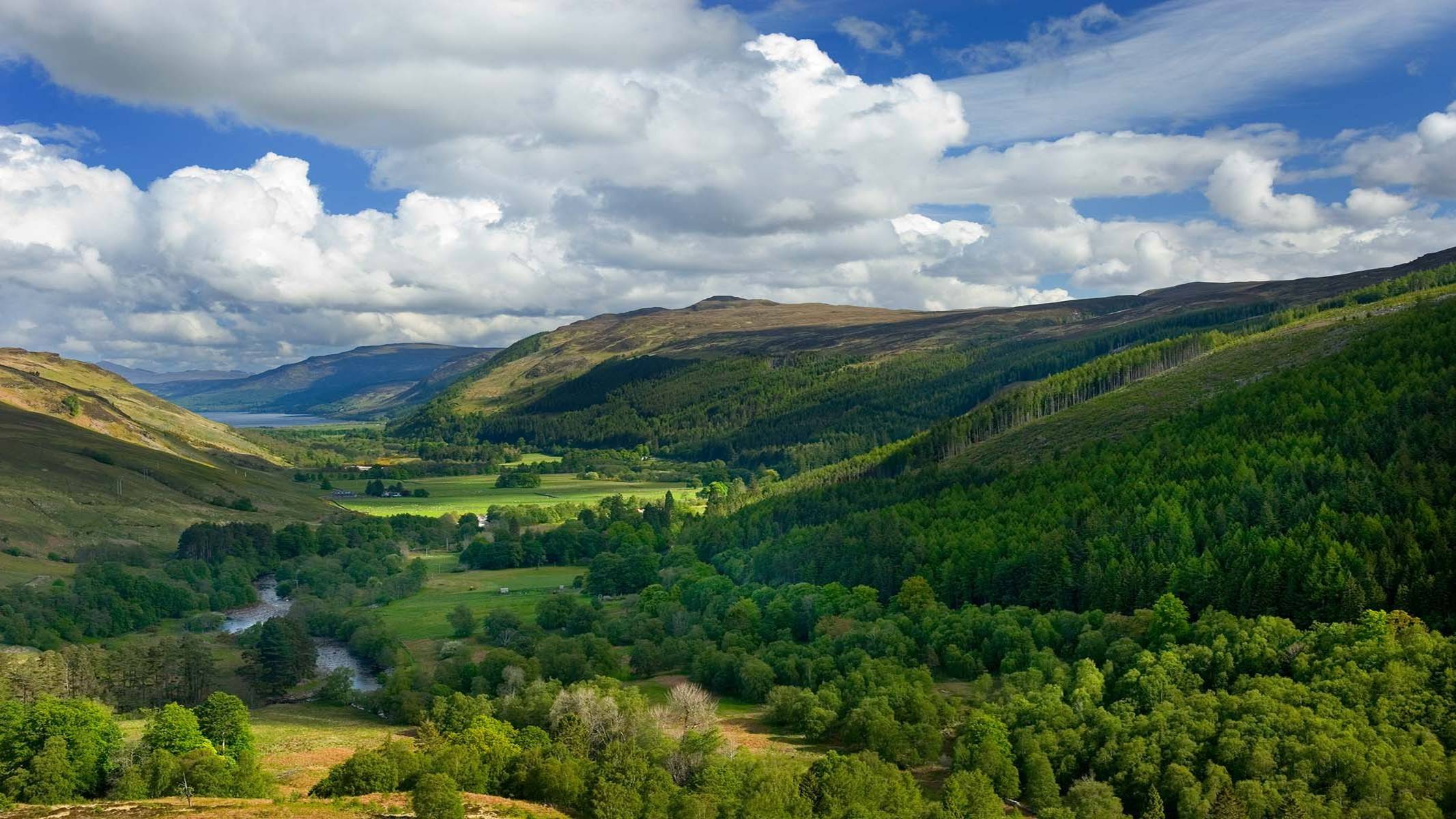
Scotland

Scotland
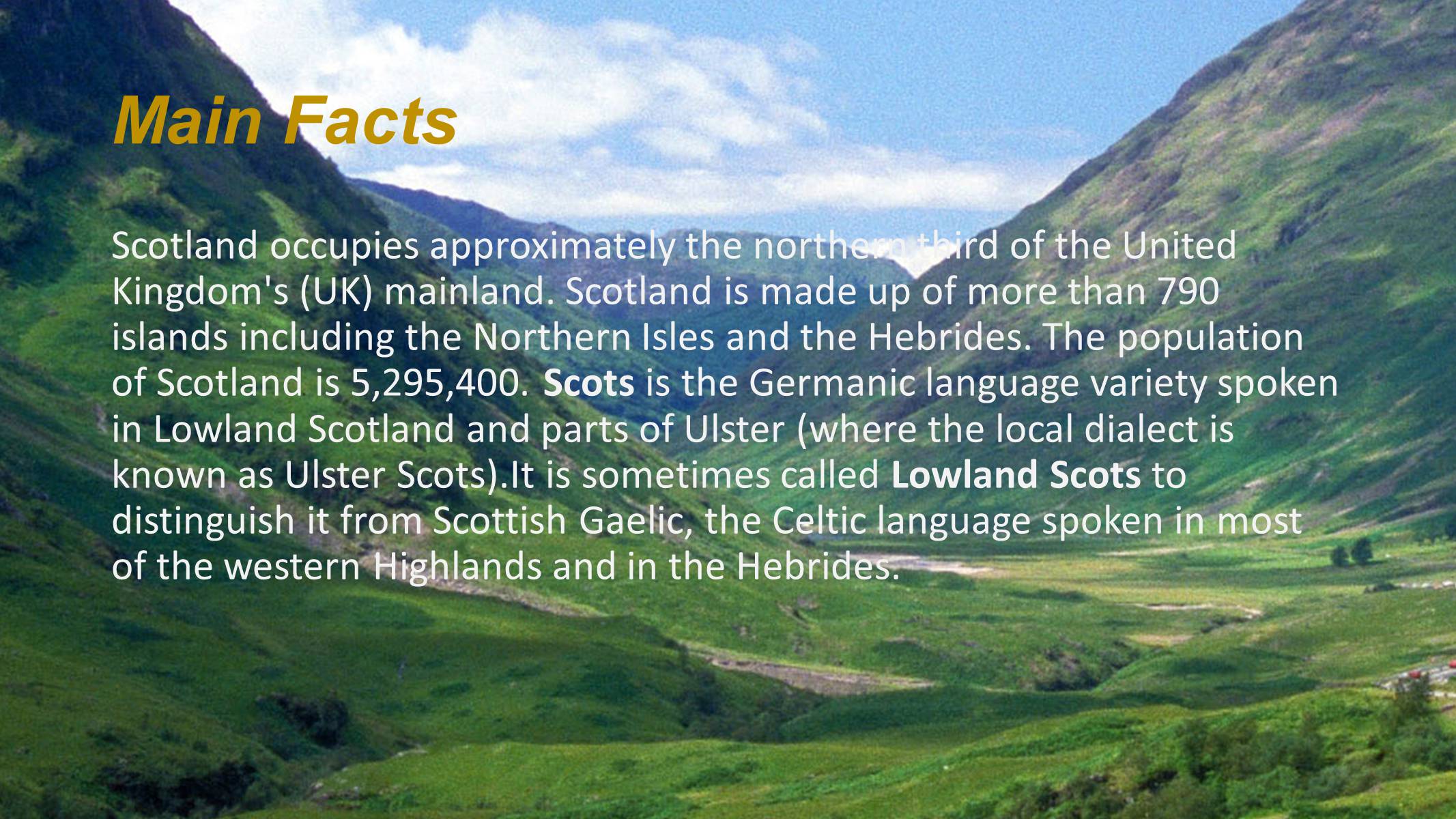
Main Facts
Scotland occupies approximately the northern third of the United Kingdom's (UK) mainland. Scotland is made up of more than 790 islands including the Northern Isles and the Hebrides. The population of Scotland is 5,295,400. Scots is the Germanic language variety spoken in Lowland Scotland and parts of Ulster (where the local dialect is known as Ulster Scots).It is sometimes called Lowland Scots to distinguish it from Scottish Gaelic, the Celtic language spoken in most of the western Highlands and in the Hebrides.
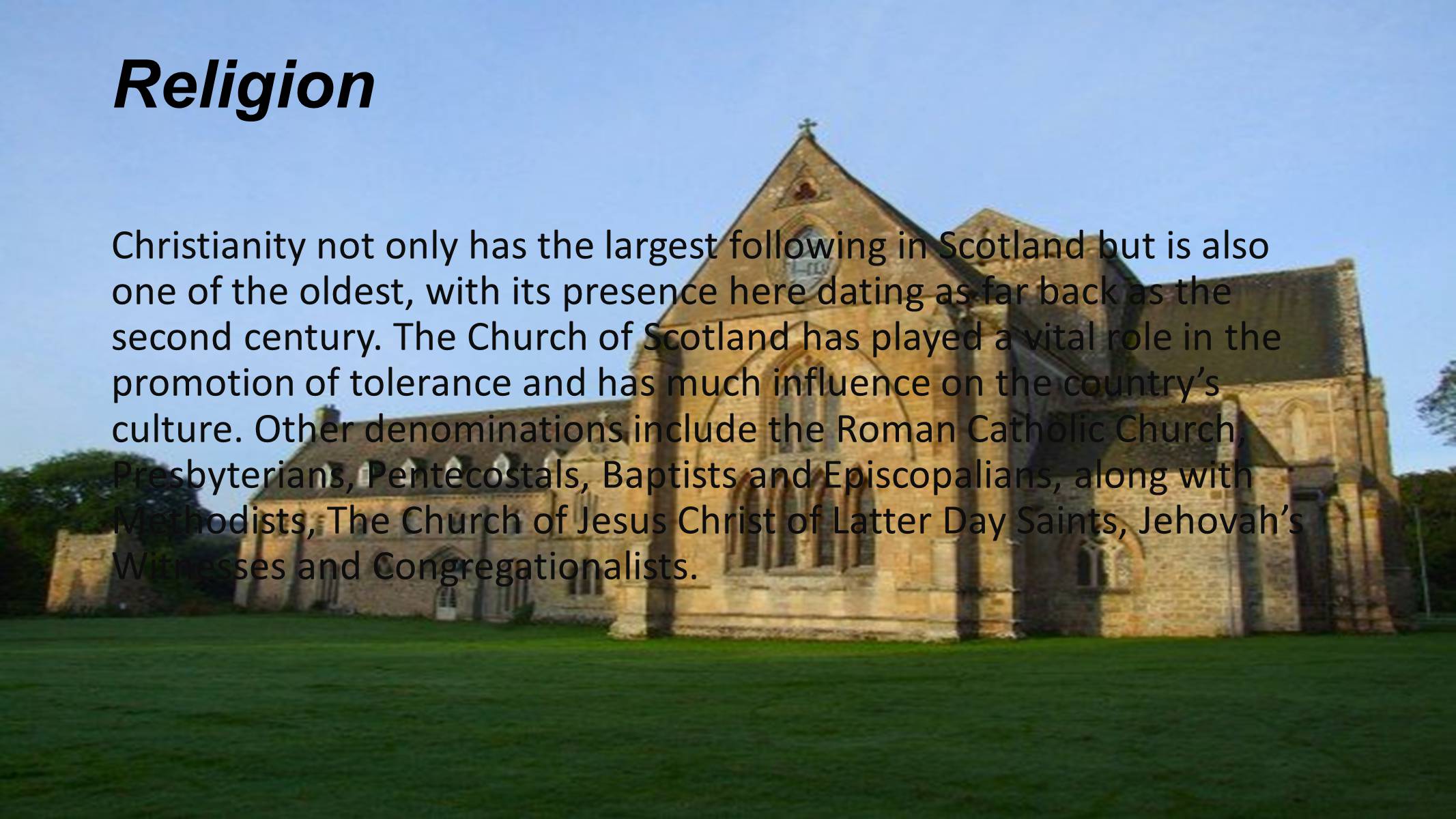
Religion
Christianity not only has the largest following in Scotland but is also one of the oldest, with its presence here dating as far back as the second century. The Church of Scotland has played a vital role in the promotion of tolerance and has much influence on the country's culture. Other denominations include the Roman Catholic Church, Presbyterians, Pentecostals, Baptists and Episcopalians, along with Methodists, The Church of Jesus Christ of Latter Day Saints, Jehovah's Witnesses and Congregationalists.
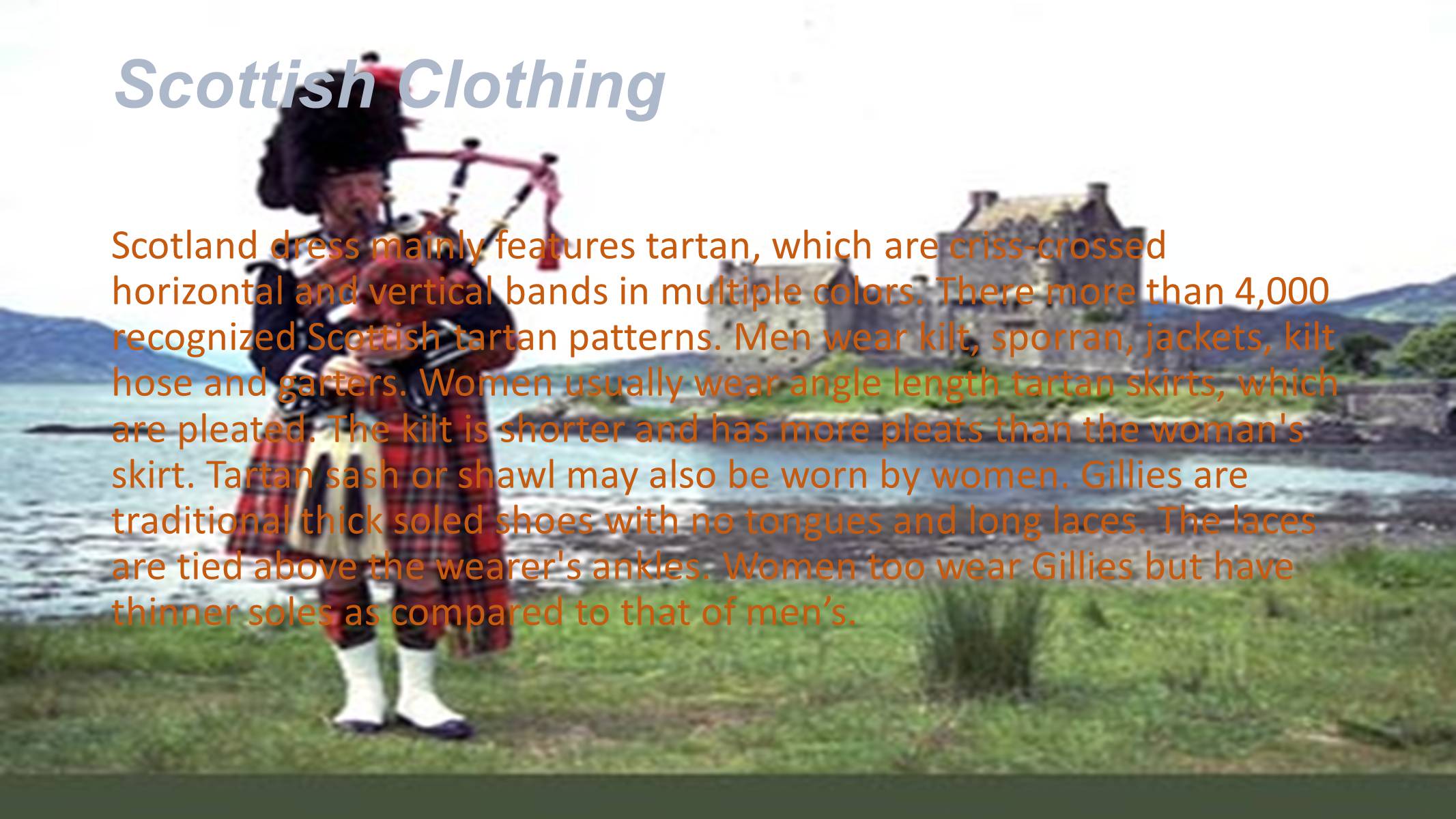
Scottish Clothing
Scotland dress mainly features tartan, which are criss-crossed horizontal and vertical bands in multiple colors. There more than 4,000 recognized Scottish tartan patterns. Men wear kilt, sporran, jackets, kilt hose and garters. Women usually wear angle length tartan skirts, which are pleated. The kilt is shorter and has more pleats than the woman's skirt. Tartan sash or shawl may also be worn by women. Gillies are traditional thick soled shoes with no tongues and long laces. The laces are tied above the wearer's ankles. Women too wear Gillies but have thinner soles as compared to that of men's.
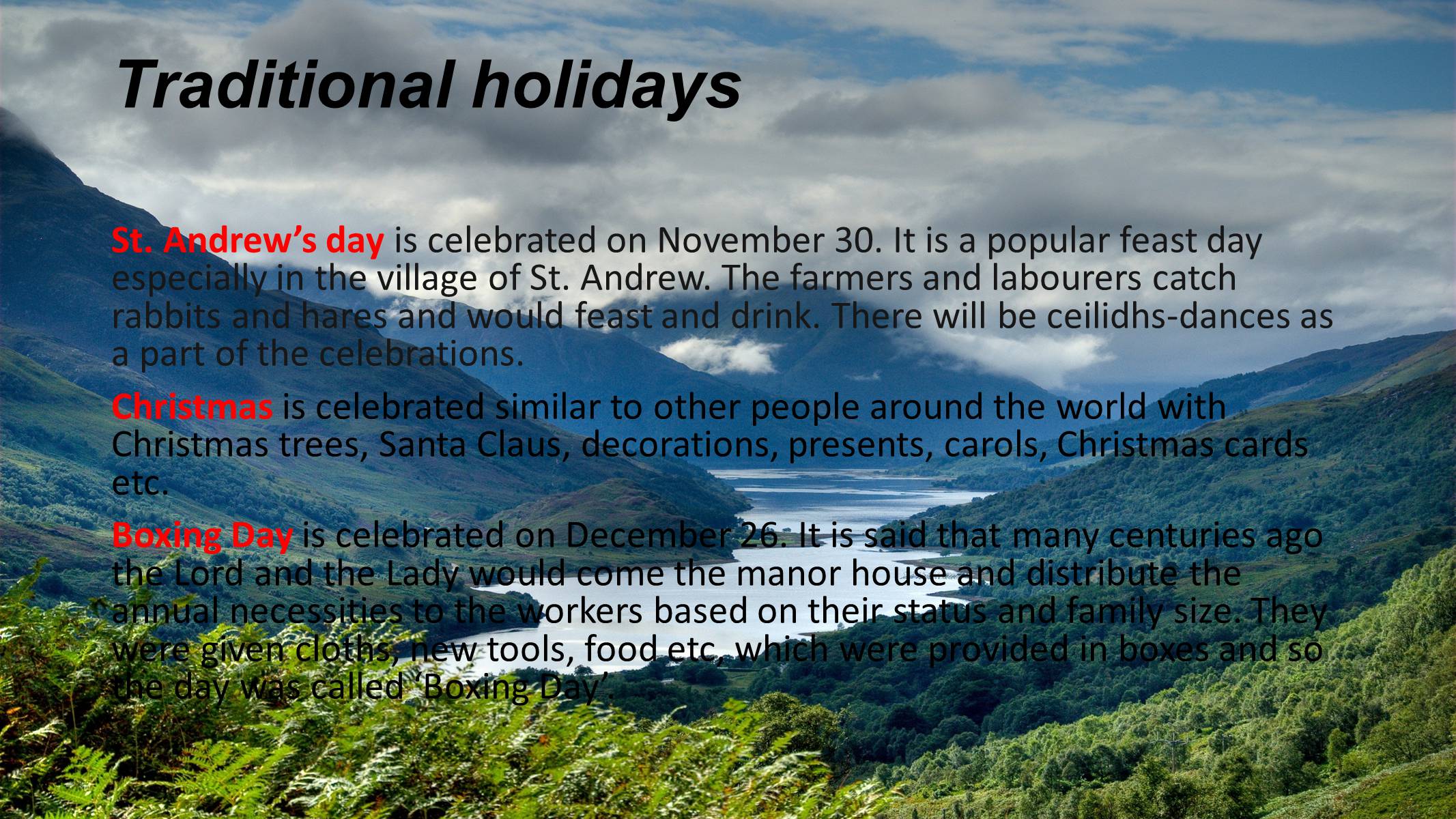
Traditional holidays
St. Andrew's day is celebrated on November 30. It is a popular feast day especially in the village of St. Andrew. The farmers and labourers catch rabbits and hares and would feast and drink. There will be ceilidhs-dances as a part of the celebrations.
Christmas is celebrated similar to other people around the world with Christmas trees, Santa Claus, decorations, presents, carols, Christmas cards etc.
Boxing Day is celebrated on December 26. It is said that many centuries ago the Lord and the Lady would come the manor house and distribute the annual necessities to the workers based on their status and family size. They were given cloths, new tools, food etc, which were provided in boxes and so the day was called ‘Boxing Day'.
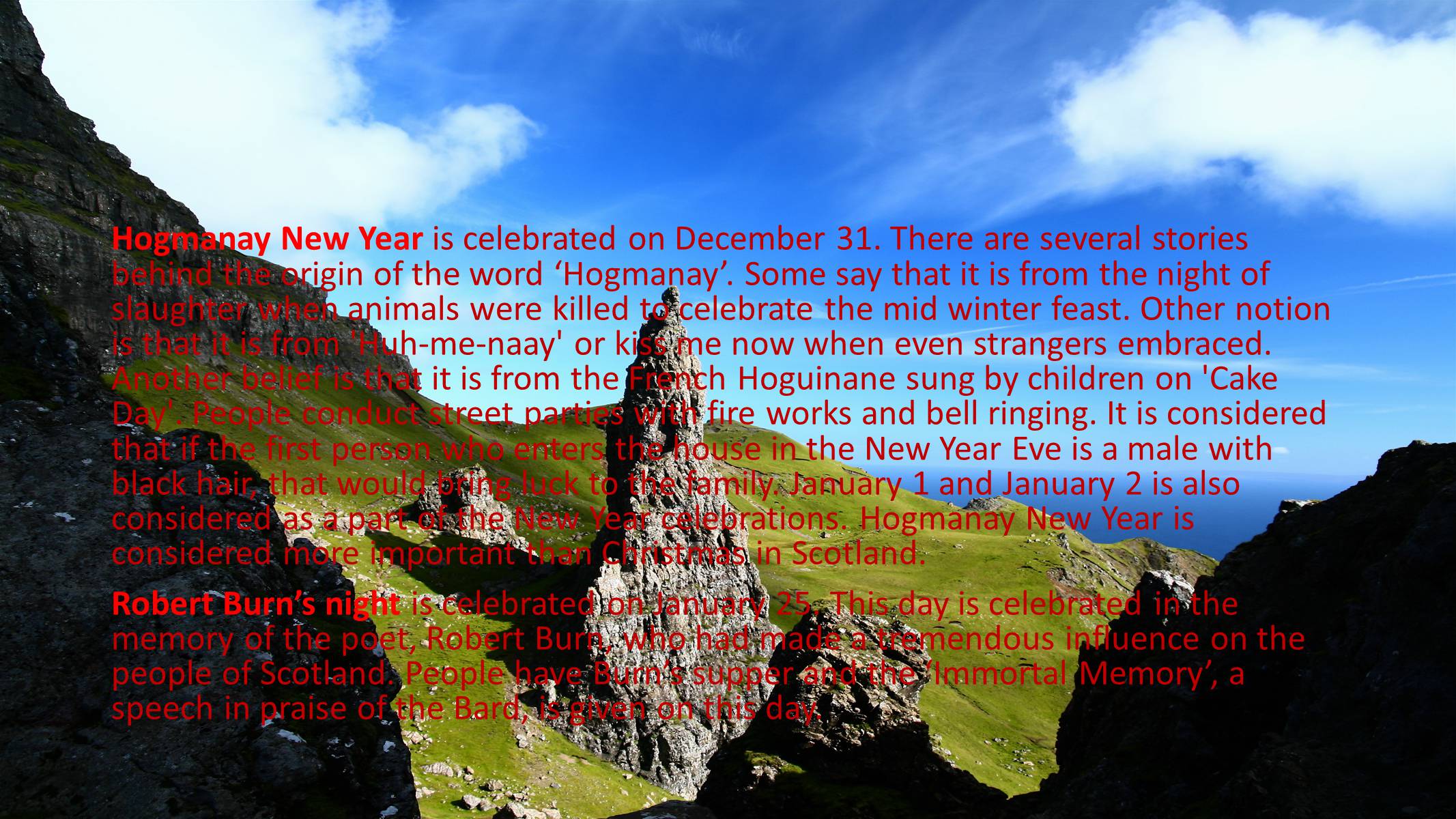
Hogmanay New Year is celebrated on December 31. There are several stories behind the origin of the word ‘Hogmanay'. Some say that it is from the night of slaughter when animals were killed to celebrate the mid winter feast. Other notion is that it is from 'Huh-me-naay' or kiss me now when even strangers embraced. Another belief is that it is from the French Hoguinane sung by children on 'Cake Day'. People conduct street parties with fire works and bell ringing. It is considered that if the first person who enters the house in the New Year Eve is a male with black hair, that would bring luck to the family. January 1 and January 2 is also considered as a part of the New Year celebrations. Hogmanay New Year is considered more important than Christmas in Scotland.
Robert Burn's night is celebrated on January 25. This day is celebrated in the memory of the poet, Robert Burn, who had made a tremendous influence on the people of Scotland. People have Burn's supper and the ‘Immortal Memory', a speech in praise of the Bard, is given on this day.
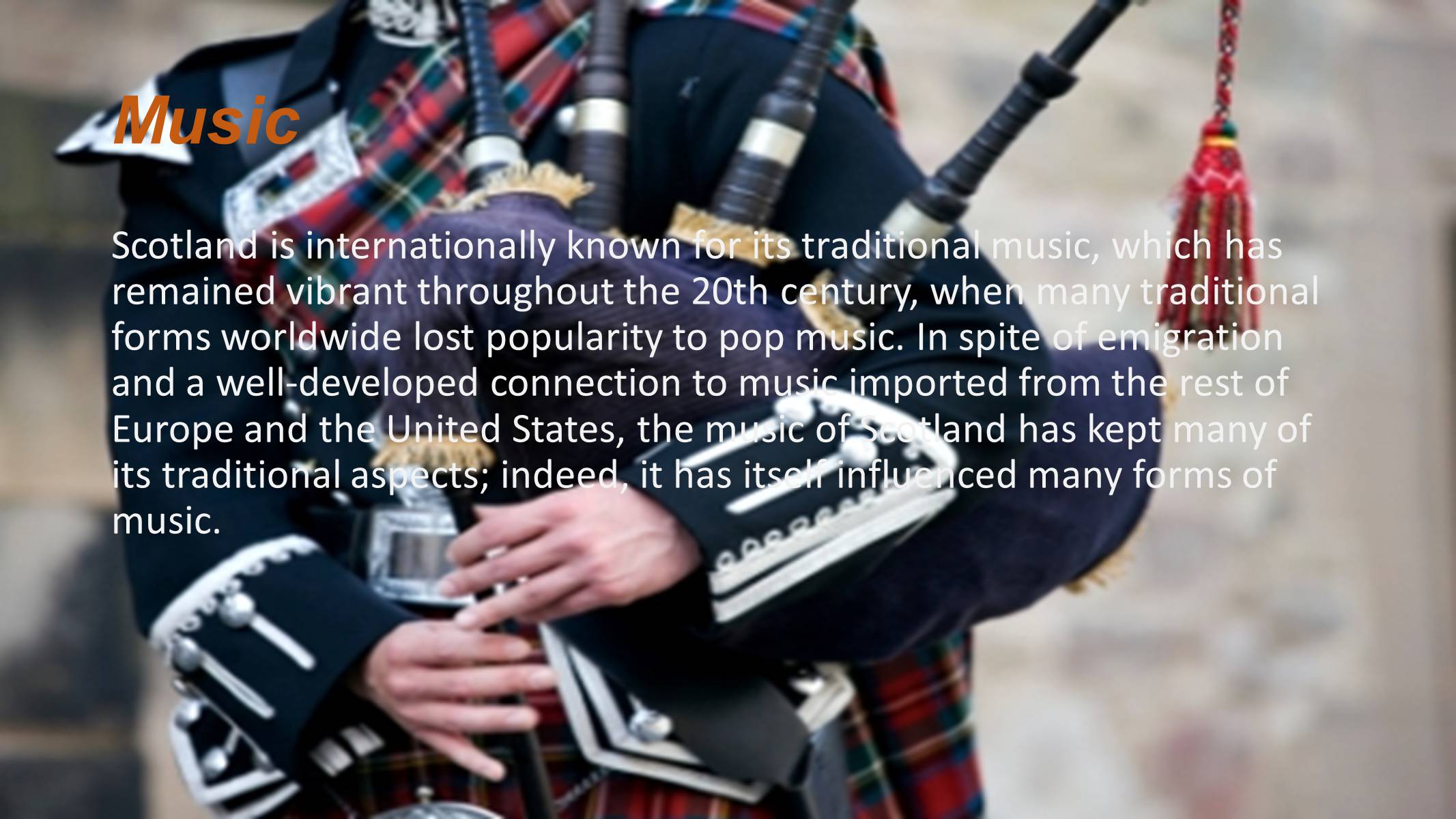
Music
Scotland is internationally known for its traditional music, which has remained vibrant throughout the 20th century, when many traditional forms worldwide lost popularity to pop music. In spite of emigration and a well-developed connection to music imported from the rest of Europe and the United States, the music of Scotland has kept many of its traditional aspects; indeed, it has itself influenced many forms of music.
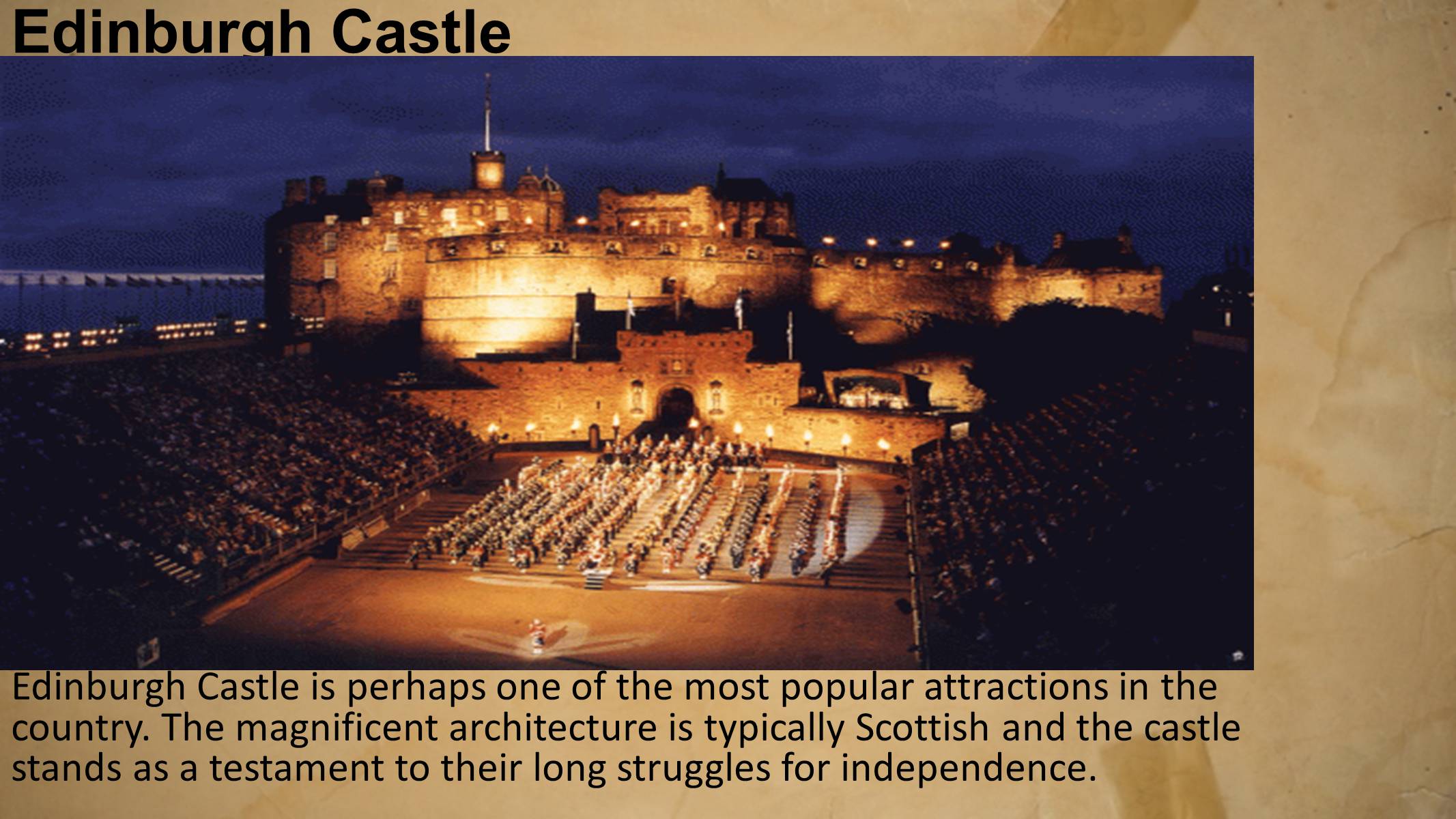
Edinburgh Castle
Edinburgh Castle is perhaps one of the most popular attractions in the country. The magnificent architecture is typically Scottish and the castle stands as a testament to their long struggles for independence.
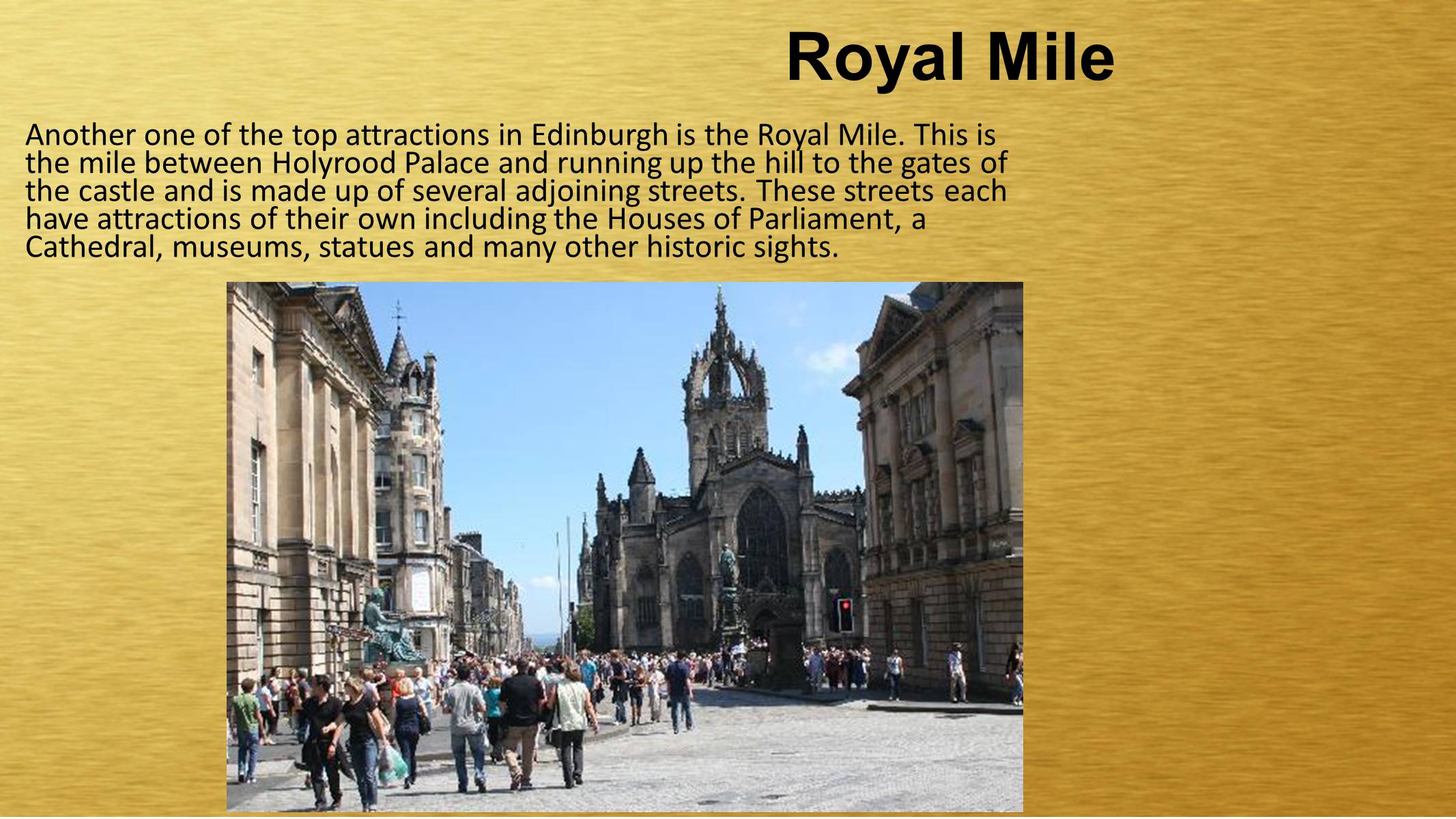
Royal Mile
Another one of the top attractions in Edinburgh is the Royal Mile. This is the mile between Holyrood Palace and running up the hill to the gates of the castle and is made up of several adjoining streets. These streets each have attractions of their own including the Houses of Parliament, a Cathedral, museums, statues and many other historic sights.
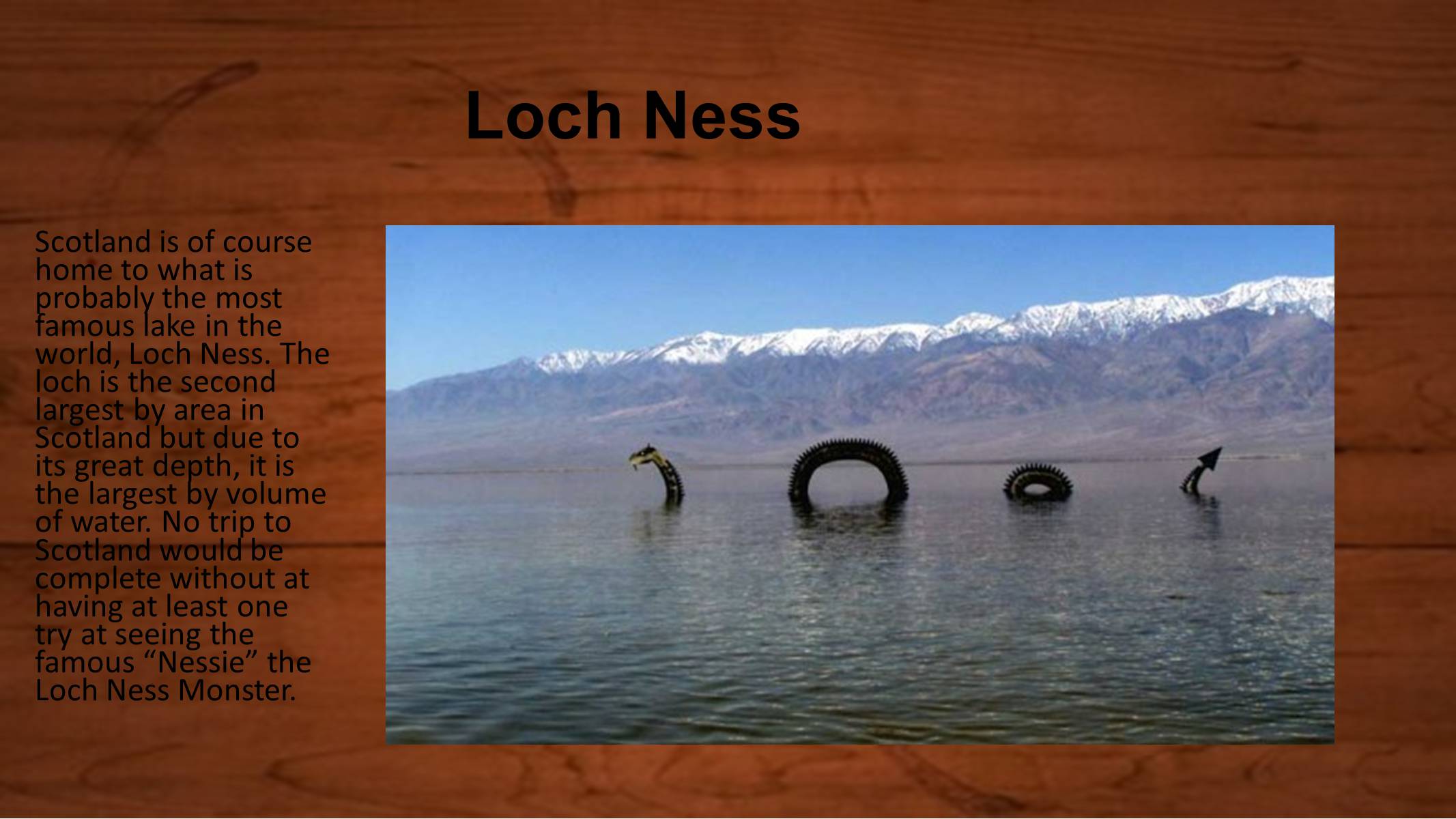
Loch Ness
Scotland is of course home to what is probably the most famous lake in the world, Loch Ness. The loch is the second largest by area in Scotland but due to its great depth, it is the largest by volume of water. No trip to Scotland would be complete without at having at least one try at seeing the famous “Nessie” the Loch Ness Monster.
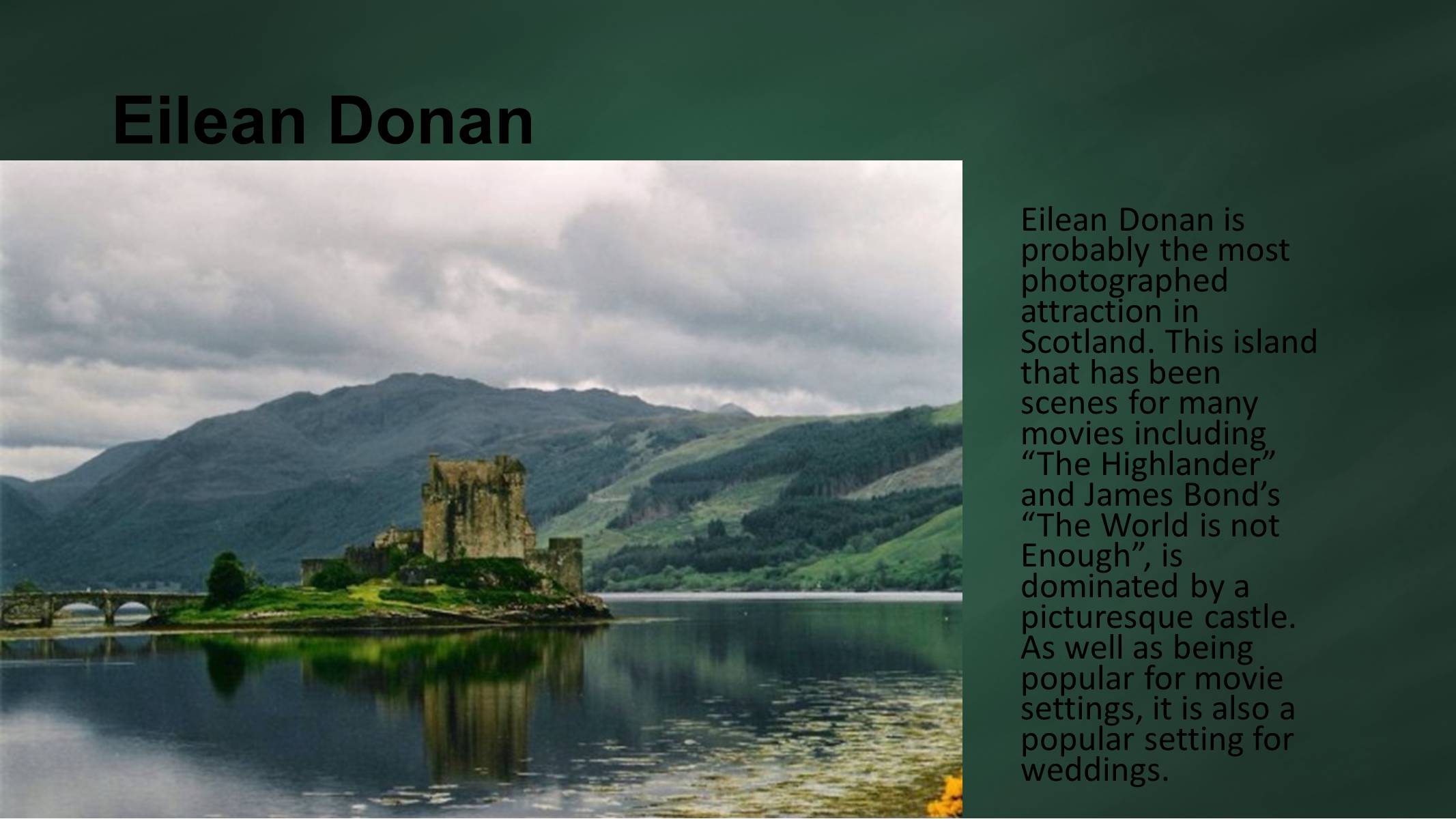
Eilean Donan
Eilean Donan is probably the most photographed attraction in Scotland. This island that has been scenes for many movies including “The Highlander” and James Bond's “The World is not Enough”, is dominated by a picturesque castle. As well as being popular for movie settings, it is also a popular setting for weddings.
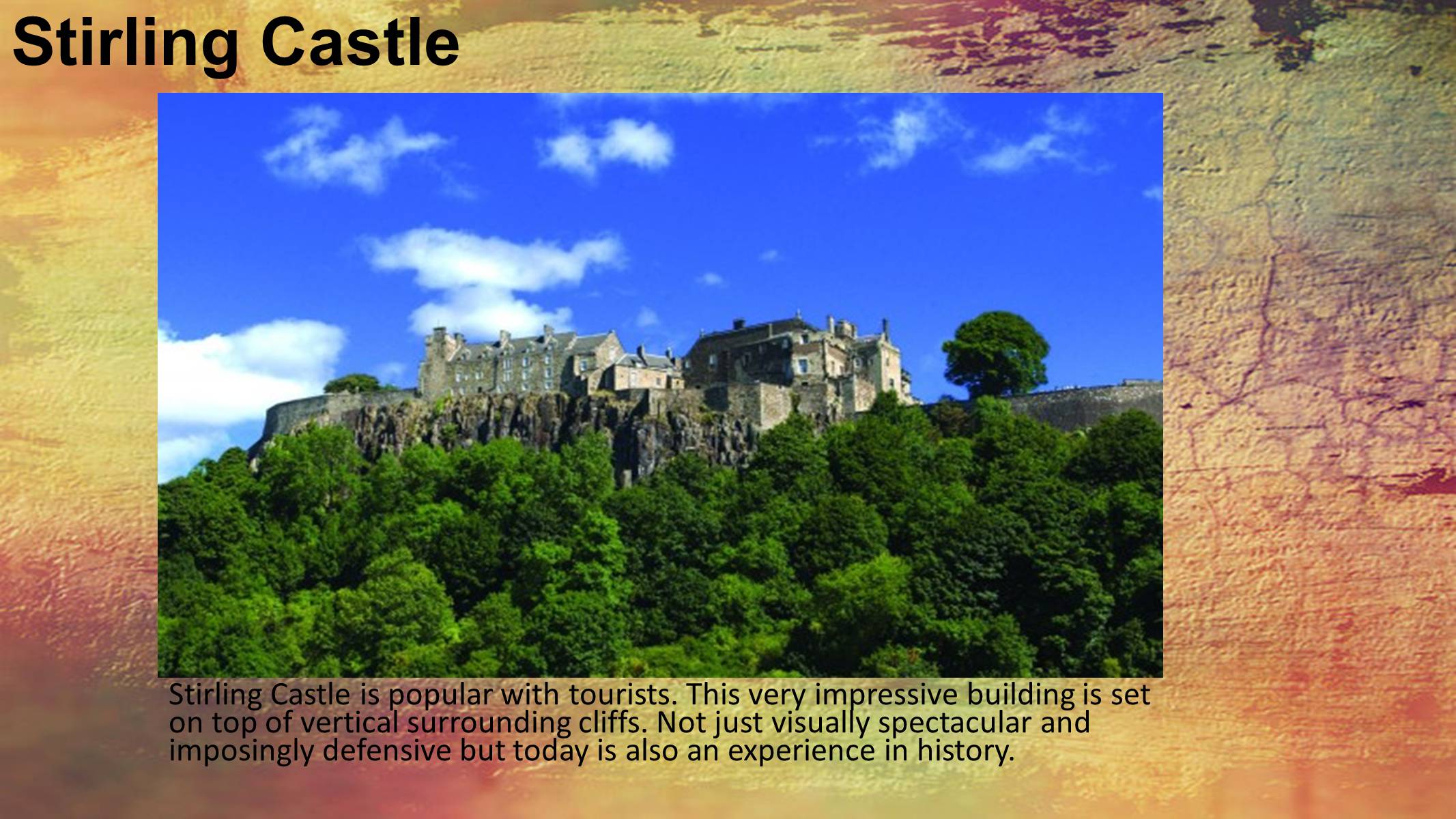
Stirling Castle
Stirling Castle is popular with tourists. This very impressive building is set on top of vertical surrounding cliffs. Not just visually spectacular and imposingly defensive but today is also an experience in history.
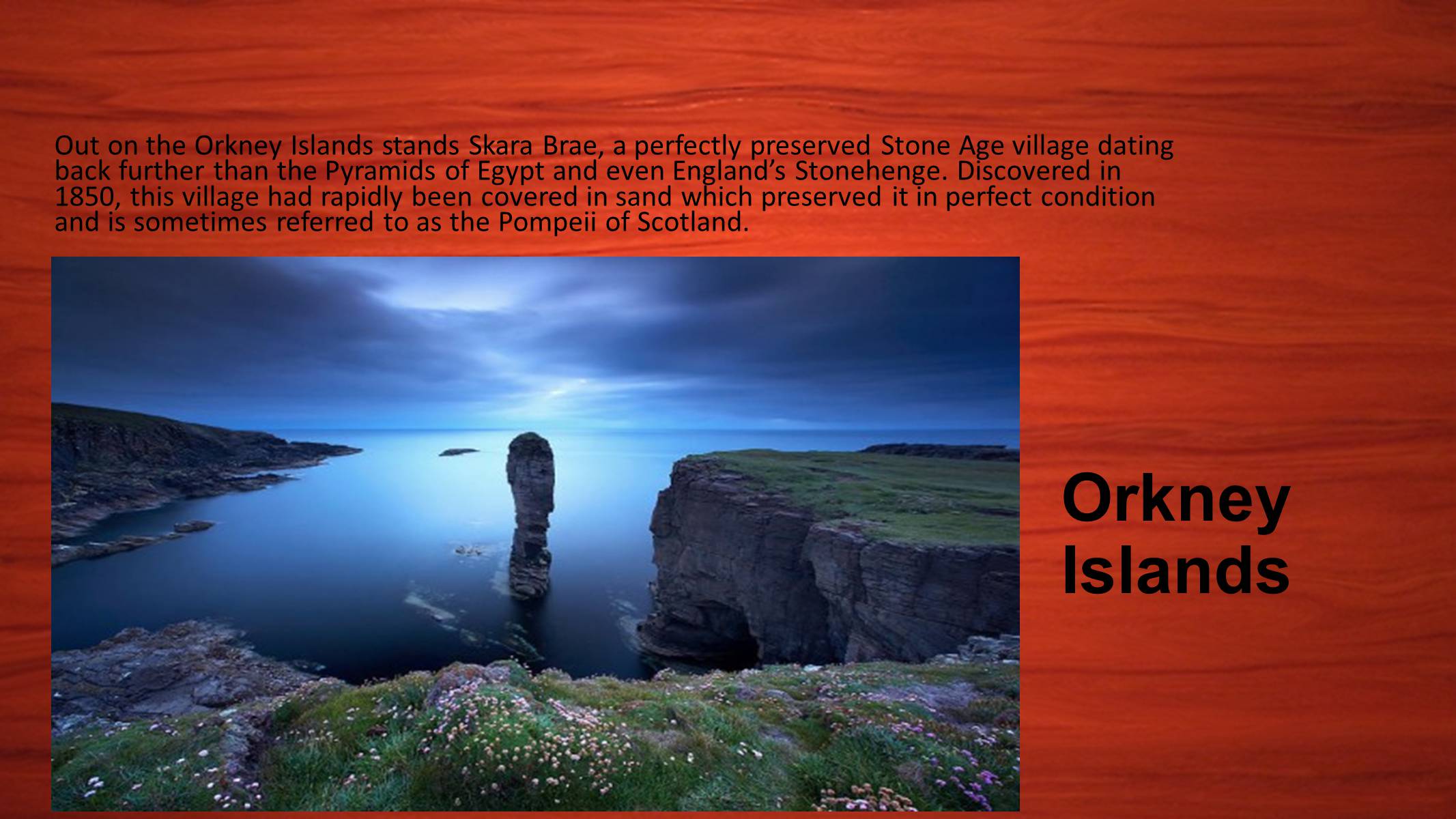
Orkney Islands
Out on the Orkney Islands stands Skara Brae, a perfectly preserved Stone Age village dating back further than the Pyramids of Egypt and even England's Stonehenge. Discovered in 1850, this village had rapidly been covered in sand which preserved it in perfect condition and is sometimes referred to as the Pompeii of Scotland.